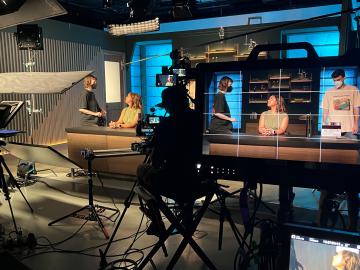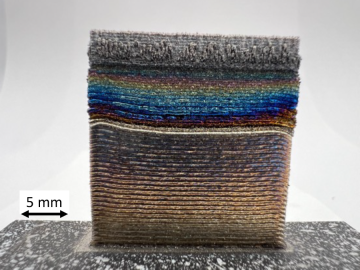
Filter News
Area of Research
- (-) Isotopes (15)
- (-) Materials (76)
- Advanced Manufacturing (1)
- Biological Systems (1)
- Biology and Environment (56)
- Building Technologies (1)
- Clean Energy (63)
- Computational Engineering (1)
- Computer Science (2)
- Electricity and Smart Grid (1)
- Energy Sciences (1)
- Fuel Cycle Science and Technology (1)
- Fusion and Fission (19)
- Fusion Energy (3)
- Isotope Development and Production (1)
- Materials Characterization (2)
- Materials Under Extremes (1)
- National Security (26)
- Neutron Science (32)
- Nuclear Science and Technology (2)
- Supercomputing (73)
News Topics
- 3-D Printing/Advanced Manufacturing (4)
- Advanced Reactors (1)
- Bioenergy (1)
- Biomedical (2)
- Buildings (3)
- Chemical Sciences (16)
- Climate Change (3)
- Composites (2)
- Computer Science (1)
- Coronavirus (1)
- Critical Materials (4)
- Decarbonization (4)
- Energy Storage (5)
- Environment (3)
- Fusion (2)
- Grid (2)
- Irradiation (2)
- Isotopes (9)
- Materials (40)
- Materials Science (7)
- Microscopy (3)
- Molten Salt (1)
- Nanotechnology (3)
- Net Zero (1)
- Neutron Science (8)
- Nuclear Energy (5)
- Partnerships (6)
- Physics (9)
- Polymers (4)
- Quantum Computing (2)
- Quantum Science (1)
- Renewable Energy (1)
- Space Exploration (1)
- Sustainable Energy (1)
- Transportation (2)
Media Contacts

Xiao-Ying Yu, a distinguished scientist at the Department of Energy’s Oak Ridge National Laboratory, has been named a Fellow of AVS: Science and Technology of Materials, Interfaces, and Processing, formerly American Vacuum Society.

ORNL nuclear chemist Clarice Phelps has long worked to educate the next generation of STEM scientists. A new endeavor will let her reach students entering college who need extra help mastering the basics they need to pursue careers in science.

Research into a new, unique technology to fabricate composite metal parts for a wide range of applications operating in extreme environments across the aviation, space and energy industries is showing promise for additive manufacturing.

Jacob McCulley of the Department of Energy’s Oak Ridge National Laboratory has been named a senior member of the Institute of Electrical and Electronics Engineers, or IEEE, one of the world’s largest technical professional

Oak Ridge National Laboratory researchers have developed a method to simplify one step of radioisotope production — and it’s faster and safer.

Researchers at the Department of Energy’s Oak Ridge National Laboratory were the first to use neutron reflectometry to peer inside a working solid-state battery and monitor its electrochemistry.

Creating energy the way the sun and stars do — through nuclear fusion — is one of the grand challenges facing science and technology. What’s easy for the sun and its billions of relatives turns out to be particularly difficult on Earth.

Scientist-inventors from ORNL will present seven new technologies during the Technology Innovation Showcase on Friday, July 14, from 8 a.m.–4 p.m. at the Joint Institute for Computational Sciences on ORNL’s campus.

An advance in a topological insulator material — whose interior behaves like an electrical insulator but whose surface behaves like a conductor — could revolutionize the fields of next-generation electronics and quantum computing, according to scientists at ORNL.

Scientists at ORNL have invented a coating that could dramatically reduce friction in common load-bearing systems with moving parts, from vehicle drive trains to wind


